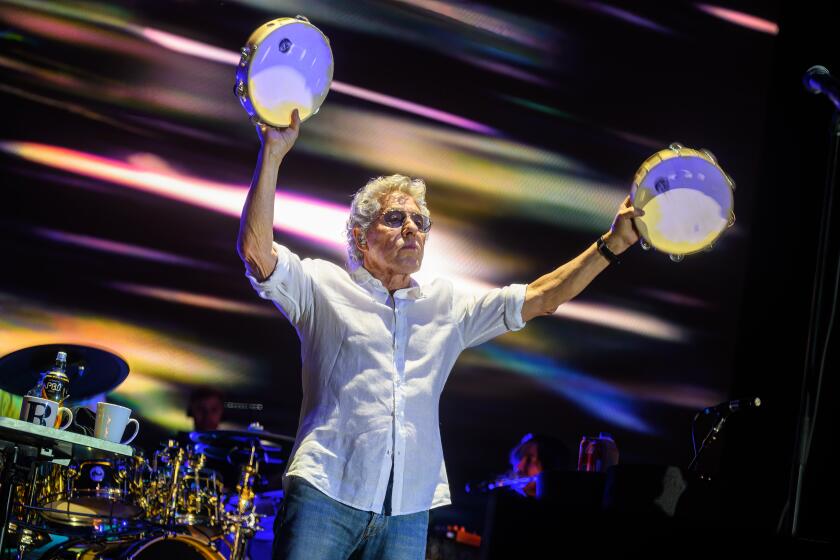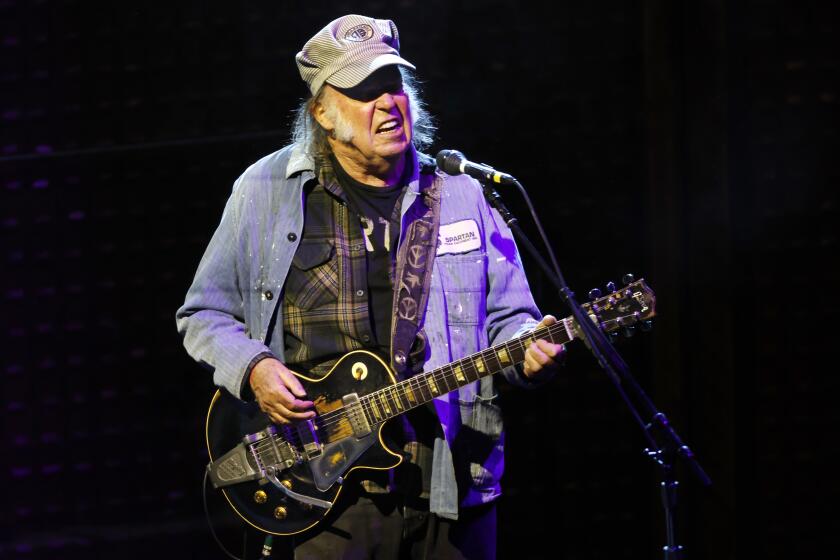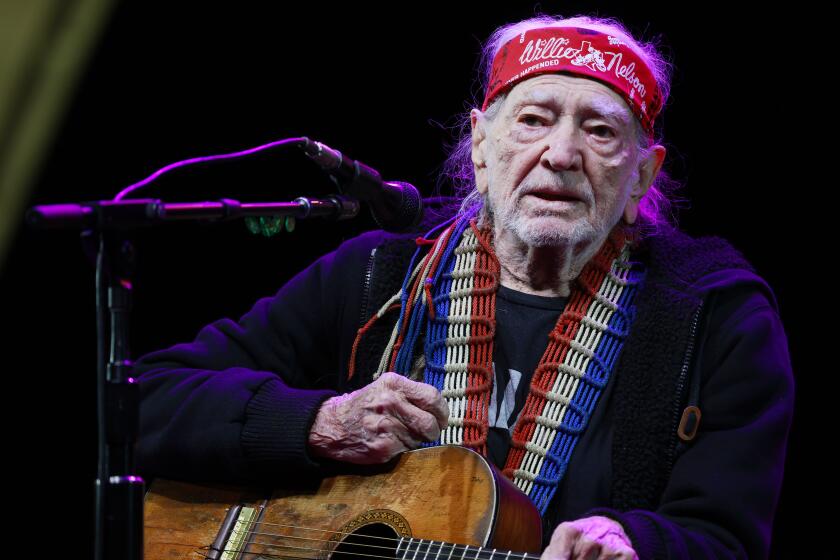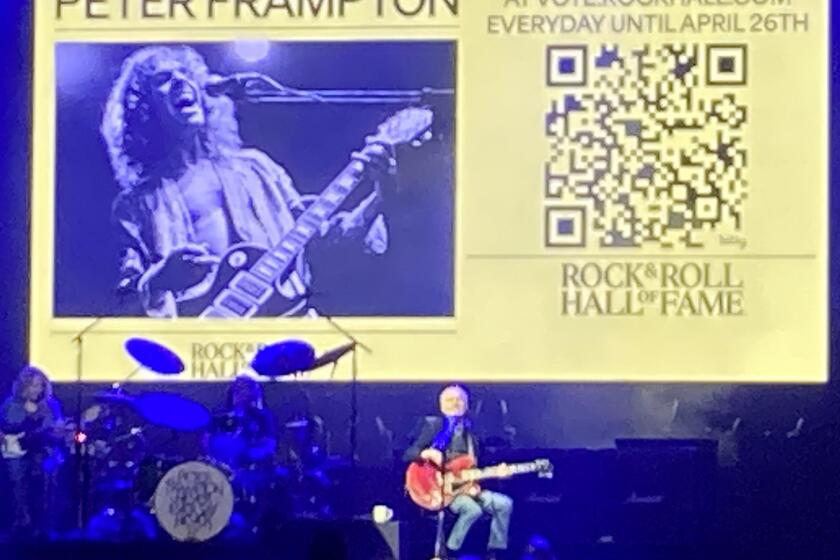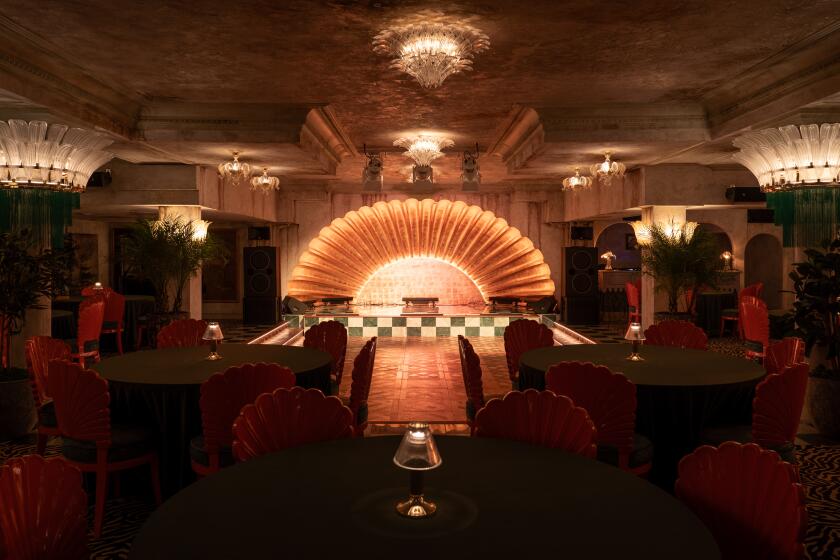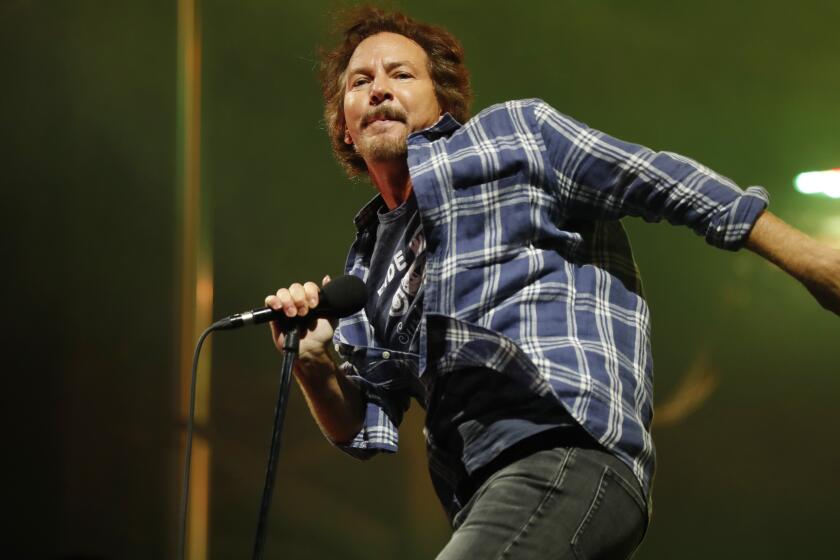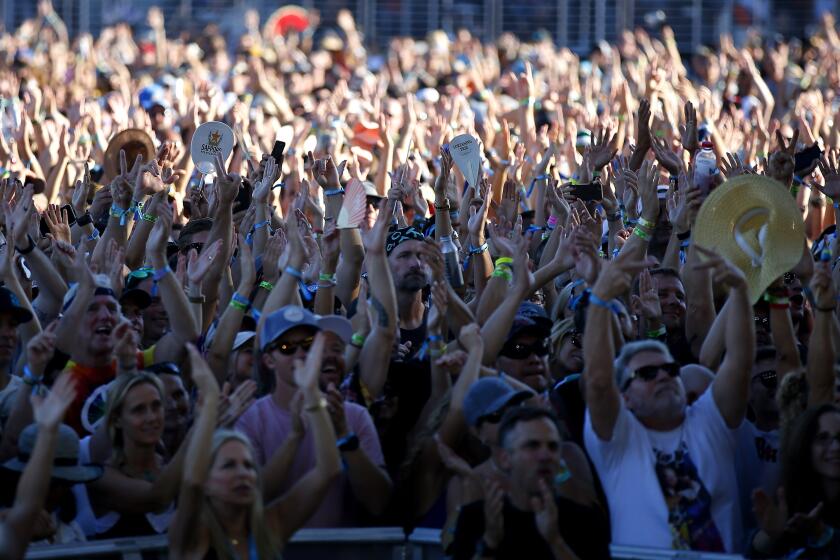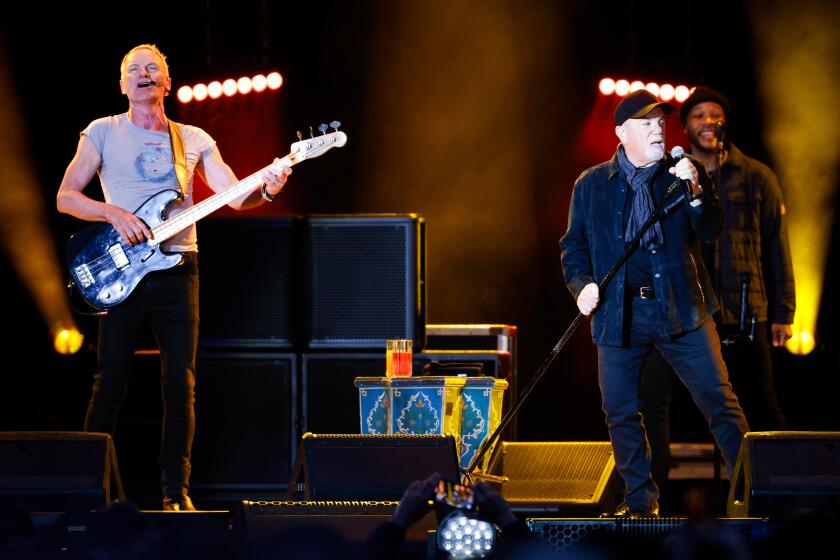CRSSD Fest performer Giorgio Moroder talks music
Millions of music fans around the world know Oscar-winning songwriter Giorgio Moroder as the father of disco, synth-pop and, more recently, EDM (short for Electronic Dance Music).
Credit for this goes to his pioneering work as the producer of key recordings by Donna Summer – whose “Love to Love You Baby” and “I Feel Love” he co-wrote – Blondie, David Bowie and others. His credits also include pivotal songs and music in the films “Flashdance,” “Top Gun” and “Midnight Express.” More recently, Moroder guested on French electronic-music duo Daft Punk’s 2013 Grammy Award-winning album, “Random Access Memories.” Its longest song, “Girogio by Moroder,” features him recounting his musical history.
But many fans may not know what inspired this Italian-born, Los Angeles-based innovator to create his trademark thump-thump-thump-thump, four-on-the-floor beat, which has been copied on countless disco and EDM hits.
“It probably came about because I’m a lousy dancer!” said Moroder, who – at 75 – is easily the oldest performer at this weekend’s two-day CRSSD Festival at Waterfront Park. The DJ-heavy lineup includes dozens of young artists who he has directly or indirectly influenced, along with the proudly left-of-center rock bands Flaming Lips and TV on the Radio. (Ticket information appears below, as does an interview with CRSSD Festival co-producer Johnny Shockey. Here are the daily performance times.)
“To dance, I needed something a little more direct, meaning four-on-the-floor, which was my kind of rhythm,” Moroder explained. “It’s great because, now, everybody’s using four-on-the-floor. At that time, it was a quite difficult decision; I almost felt a little guilty because it was so simplified. People would say, even now, that using the kick drum with four beats has stifled creativity. So, at the beginning, I felt a little guilty doing it.”
Morodoer’s four-on-the-floor beat has been ubiquitous on countless recordings, and in nightclubs around the world, for the past four decades. Upon first hearing “Love to Love You Baby,” Summer’s 1975 breakthrough hit, English producer and ambient-music pioneer Brian Eno famously told David Bowie, his friend and collaborator: “I’ve heard the sound of the future.”
Speaking from his Los Angeles home, Moroder chuckled as he recalled the initial reaction to “Baby,” which put him and Summer on the map.
“In the beginning, there was not too much interest,” he said. “It was not like people were saying: ‘Oh, great! This is the new sound.’ Until, one day, Brian Eno told David Bowie he’d found the ‘sound of the future.’ And, coming from Brian Eno – who is a genius – that started me thinking: ‘Maybe this is something interesting.’ The more the years passed, the bigger the song became.”
In June, Moroder released “Déjà Vu,” his first album since 1992’s “Forever Dancing.”
His dozen-song new release features guest vocals by everyone from Sia and Kelis to Britney Spears and Kylie Minogue. It also features Moroder’s slyly titled instrumental number, “74 is the New 24.”
“I never thought I would be able to, or could, work at 74 or 75,” he said
“I didn’t do too much in the last 15 years, apart from playing a lot of golf, and I was kind of getting bored. Then something happened and Daft Punk rediscovered me. And I can tell you: I love it! I love to work. I travel the world now as a DJ and make nice money, so it’s perfect.”
Moroder’s first album, “Bubblegum,” came out in 1969 in his native Italy. Depending on your musical preferences, it lived up, or down, to its title.
“At that time I kind of liked bubblegum music,” said Moroder, who recalls having had his first musical epiphany 60 years ago.
“There was a song by Paul Anka called ‘Diana’ that I really liked in 1955, and that’s when I started to learn to play the guitar and sing a little bit. Then I played in the summertime in Italy in some of the resorts, bars and cafes. At 19 I became a professional musician. I played with two or three people for the next 5-6 years. It was with a piano player, bassist and drummer. It was nothing like a rock band; we played Beatles hits and pop songs of the day.”
Moroder’s next epiphany came with the 1968 album, “Switched On Bach,” which featured Walter Carlos (now Wendy Carlos) performing an all-Bach classical repertoire on the then relatively new Moog synthesizer. After moving to Germany from Italy a few years later, he delved into the Moog for the first time in earnest.
“That ‘Switched On Bach’ album was the main reason I started to inquire about synthesizers,” Moroder said. “And I found a classical composer in 1971 in Munich (Eberhard Schoener), who had one of those big Moog machines. He played me some kind of classical pieces he composed on the synthesizer and I liked the sounds, so I rented the Moog module and I got Schoener’s engineer (Robby Weddel), who knew how to get some sounds out of it. Because, at the time, it was very difficult to operate the Moog. Robby helped me less with programming the Moog than with finding the good sounds and connecting all the oscillators. I was not interested in how it worked; I was just interested in asking this guy, Robby, giving me a (Moog) bass line or a sound of a string instrument.
“The first song I did with the synthesizer was ‘Son of My Father’ (by Chicory Tip in 1971), which was a No. 1 hit in England. I think it was the first pop hit on which synthesizer was so prominently featured. Emerson, Lake & Palmer had a hit (in 1970) with ‘Lucky Man’ (which featured a Moog synthesizer solo) but that was more rock.”
In Munich, Moroder quickly teamed up with keyboardist Harold Faltermayer and drummer Keith Forsey, both of whom went on to achieve prominence on their own. He struck gold (and platinum) with Donna Summer’s 1975 breakthrough hit, ““Love to Love You Baby,” which was nearly 17 minutes long and featured Summer alternating between singing and orgasmic moans, the latter of which she delivered effectively enough to suggest she was a very good actress.
“Yeah, she was a good actress,” Moroder said. “I think she meant it (the moans), basically as, not a joke, but something funny. She did a good job. And I think, at that moment, she was a great actress.”
But it was with Summer’s “I Feel Love” that Moroder and musical partner Peter Bellotte crafted the first hit record to feature synthesizers providing virtually all of the backing instrumentation.
“The idea was to create a pop song exclusively played with synthesizers,” Moroder said. “With the help of Robby Weddel, I played the bass lines, all triggered by a click (track). I built, with white noise, a snare drum sound and a hi hat. I did the polyphonic strings. Except for the kick drum, which was played by Keith Forsey, all of the instrumentation was from a synthesizer. The idea was to have metallic computerized rhythms and then add the nice romantic kind of voice Donna had.”
The first half of the 1970s saw the international rise of Kraftwerk and Tangerine Dream, two German electronic-music groups whose work with synthesizers was as revolutionary as Moroder’s, albeit on a musical plane far removed from disco and synth-pop.
Did Moroder ever interact with either group while he was based in Munich during the same time period?
“Well,” he replied, “Kraftwerk lived in Dusseldorf and Tangerine Dream was in, in...”
Berlin?
“Berlin. So there was no personal communication. I only met one of the guys in Kraftwerk years and years later, but I loved what Kraftwerk did with (their breakthrough album) ‘Autobahn.’ And I particularly liked Tangerine Dream.”
The four-on-the-floor beat Moroder popularized around the world begs one question: How is his dancing today?
He laughed.
“As bad as ever!”
Moroder’s Saturday performance at CRSSD Festival will mark the first time he has appeared in San Diego, although he has vacationed here in the past.
“Giorgio is one of the forefathers of dance music,” said festival co-founder Johnny Shockey. “Iconic acts like him rarely come around, so it makes perfect sense to book him given the opportunity. He’s inspiring to say the least, and reminds us all that producing dance music is a lifestyle and nothing less.”
CRSSD Festival debuted March 6 and 8. The first ticketed event to be held at Waterfront Park, it drew a capacity crowd of 15,000 people the first day and nearly as many the second. It was a remarkable accomplishment for a first-time festival, let alone one featuring electronic music acts with little mainstream recognition.
The second edition still skews heavily towards deep house, neo-disco, techno and other electronic music styles, while again deliberately omitting the bass-heavy EDM acts that typically draw large crowds to the Coachella Valley Music & Arts Festival in Indio, Electric Daisy in Las Vegas and other major festivals.
But this year’s CRSSD lineup also features two proudly left-of-center rock bands, Flaming Lips and TV on the Radio, who have both performed at Coachella. Their inclusion this weekend could help to bring in new attendees.
“I think there was an opportunity to define ourselves us as a well-rounded festival. And throwing a little rock ‘n’ roll in definitely helps,” Shockey said.
Shockey is the head of LED, a five-year-old San Diego concert production company, and FNGRS CRSSD, its two-year-old sister company. FNGRS CRSSD produces CRSSD Festival in collaboration with the Los Angeles-based Goldenvoice, which stages the annual Coachella and Stagecoach festivals.
The March debut of CRSSD Festival was a commercial and artistic success, but was not without its bumps. There was $65,000 in damage to plants, valves, irrigation heads, granite surfaces and a playground sign. CRSSD Fest paid for those damages in full, according to Jessica Geiszler, the Marketing & Public Outreach Manager for the County of San Diego’s Department of Parks and Recreation.
Shockey vowed that the lessons learned in March would make for a smoother event this time around.
“We have things we want to improve on,” he said. “Looking back (at March) and digesting what happened, we realized we did a lot of things right and then a few things – I won’t say wrong – but that we need to improve on. And we will.”
CRSSD Fest
With: Flaming Lips, TV On The Radio, Giorgio Moroder, Jamie xx, Banks, Panda Bear, Alunageorge, Bob Moses, Oliver Nelson, Bonobo and more than 50 other acts
When: Noon to 11 p.m. Saturday and Sunday
Where: Waterfront Park (next to the County Administration Center), 1600 Pacific Highway, downtown
Tickets: $60 single day; $125 two-day pass (must be 21 or older to attend)
Online: crssdfest.com/tickets
Get U-T Arts & Culture on Thursdays
A San Diego insider’s look at what talented artists are bringing to the stage, screen, galleries and more.
You may occasionally receive promotional content from the San Diego Union-Tribune.

